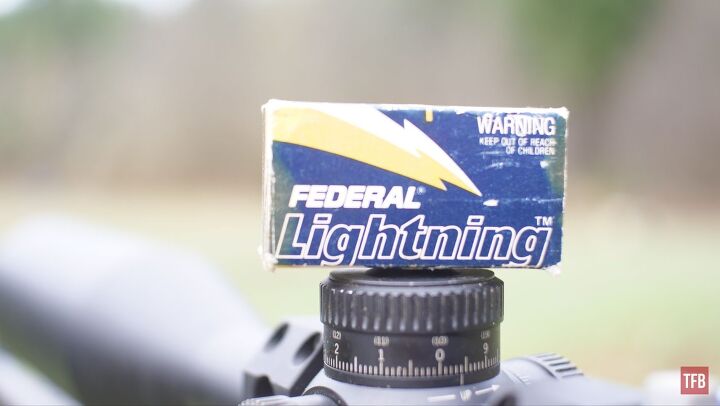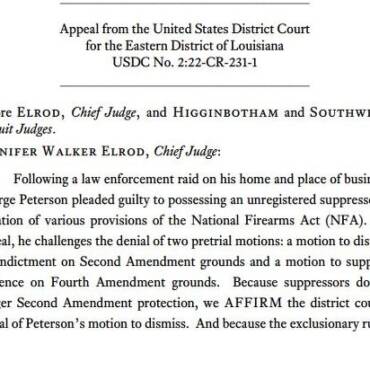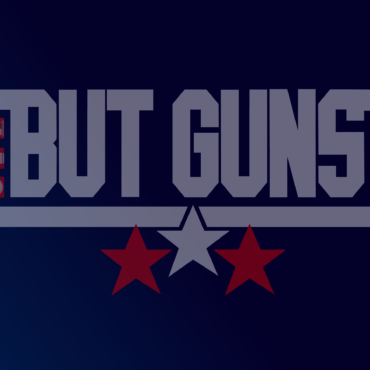The Rimfire Report: A 30-Year-Old Box of Federal Lightning 22LR

Hello and welcome back to another edition of The Rimfire Report! This ongoing series is all about the world of rimfire and its many interesting guns, history, ammo, and more. In this continuing series where I test as many .22LR offerings as I can get my hands on, we’ve covered everything from CCI’s Standard Velocity to European budget picks like S&B Club. This week, I’m taking a look at a classic American staple—Federal Lightning 40-grain 22LR, marketed as an affordable, all-purpose round for plinking and small game. I dug up a roughly 30-year-old box of the stuff when doing some spring cleaning in the shop and thought I’d run it through our series of tests to see how it’s held up over all these years.
More Rimfire Report @ TFB:

The Rimfire Report: A 30-Year-Old Box of Federal Lightning 22LR
Federal Lightning 22LR is part of the Champion line, designed for recreational shooting, target practice, and small game hunting. It’s a high-velocity round with a 40-grain lead round nose (LRN) bullet, promising reliable performance at a budget-friendly price. I can’t find any hard data on when exactly Federal decided to start dropping the “Lightning” moniker. The best I can tell from digging through various forums is that the Lightning branding started to disappear from shelves from around 2005. On the reverse side of things, Federal was selling the Lightning brand of 40-grain LRNs as early as the ’70s, where it is said they were sold for about $1.40 per box of 50 rounds.

- Bullet Weight: 40 Grain
- Bullet Type: Lead Round Nose
- Muzzle Velocity: 1,240 fps (advertised, rifle barrel)
- Rounds Per Box: 50
- Usage: Plinking/Target Shooting/Small Game
- Features: Non-corrosive priming, beeswax-lubricated bullet

This ammo’s been around for ages—think back to the days when you could grab a brick at Walmart or Bi-Mart for a couple of bucks at most. It’s still widely available today, albeit solely through the new Champion name, with 50-round boxes running about $4-$5 (around $0.08-$0.10 per round), and bulk packs like 500-round bricks often popping up for under $40. That price point makes it a solid contender for high-volume plinking, but Federal also touts it as a small game option. I was curious to see if this ammo would still work at all, being probably over 30 years old or more. So, to the range with my old box of ammo I went.

A Different Kind of Chornograph – The Caldwell Velociradar
While I absolutely love the Garmin Xero C1 Pro Chronograph, I have also been toying around with the new offering from Caldwell – the Velociradar. In contrast to the nearly pocket-sized Garmin, the Velociradar is about the size of a Labradar but features an onboard rechargeable battery, a 2” color screen, and a more advanced “Chirp” radar which allows the chronograph to give you a bullet’s ballistic coefficient with each shot. A chronograph that can give you the real-world BC of your bullet means you should be able to quickly and effortlessly develop a dope card for your rifle, just with a couple of shots and with real data instead of what’s on the manufacturer’s box. For our tests today, the BC won’t really matter – but just in case you’re wondering, the Velociradar gave us a BC of 0.127, which is pretty on par for most bulk 22LR loads (it’s not very aerodynamically efficient).

Velocity Data
Federal’s advertised velocity for the modern Champion ammo is 1,240 fps. While the high end of our data set did indeed give us this velocity, unfortunately, the old boxes don’t have an advertised velocity or even a bullet weight listed, so we can’t confirm 100% what Federal’s claims for this ammo were, but it’s likely they were and still are the exact same as the modern Federal Champion 40-grain LRN ammo. In fact, I used some modern Federal Champion 40-grain to zero the rifle before testing the box of Lightning.

With a standard deviation of 30.8 fps and an extreme spread of 155, this ammo is either clearly showing its age or its price range, or both at the same time. It’s not impossible for bulk HV ammo like this to perform well in a consistency test, but what I’ve found is that most bulk offerings typically have pretty large extreme spreads as well as sometimes very abysmal standard deviations (the important one). 30.8 FPS isn’t bad in the grand scheme of things and I think that our accuracy test should demonstrate that as well.

Accuracy Data
For accuracy, I shot five 10-round groups at 50 yards, using the B14R zeroed with modern Federal Champion 40-grain. The Federal Lightning seemed to group at about 1.5” consistently under my hands, respectable for a round that, at the time, only cost a couple of pennies to shoot. I’d say this level of accuracy is more than adequate for popping cans or nailing a squirrel at moderate range – probably what this ammo would have been used for if it had found its way into my hands all these years later. The point of impact shifted about half an inch high compared to CCI SV, likely due to the higher velocity, but it was consistent enough to adjust for pretty quickly using the modern ammo.

The beeswax-lubricated lead bullet left some fouling in the bore after 50 rounds—not excessive, but more than modern copper-plated options like CCI Mini-Mags. The wax itself had long since degraded and worn into more of a white powder, but it didn’t seem to hinder feeding or extraction from the B14R in the wet spring weather. I doubt you’d get the same performance out of a semi-auto.


Final Thoughts
Federal Lightning 40-grain 22LR is exactly what it promises: a no-nonsense, affordable round that’s fun to shoot and versatile enough for casual use. The velocity and accuracy are good enough for what they’re sold for, and what’s most amazing to me is that after decades of being repeatedly stored and moved, all 50 rounds went off without a single malfunction.

Today, Federal’s Champion 22LR is sold at $0.08-$0.10 per round, which makes it tough to beat for range days or for teaching new shooters. That said, it’s not breaking any records, and it most certainly won’t win you any matches—premium options like CCI Green Tag or even Browning PRO-22 outshine it in consistency and refinement, albeit at a higher cost. If you spot a bulk pack on sale, it’s worth grabbing if you like to have bulk ammo around to feed a day of carefree plinking with your friends and family.

What’s your take on Federal Lightning? Have you ever run it through your .22s when it was still in production, or did you stick to other brands for your plinking days? Drop your thoughts below—I always enjoy hearing from you. Thanks for reading The Rimfire Report, and I’ll catch you next week for more rimfire goodness!






